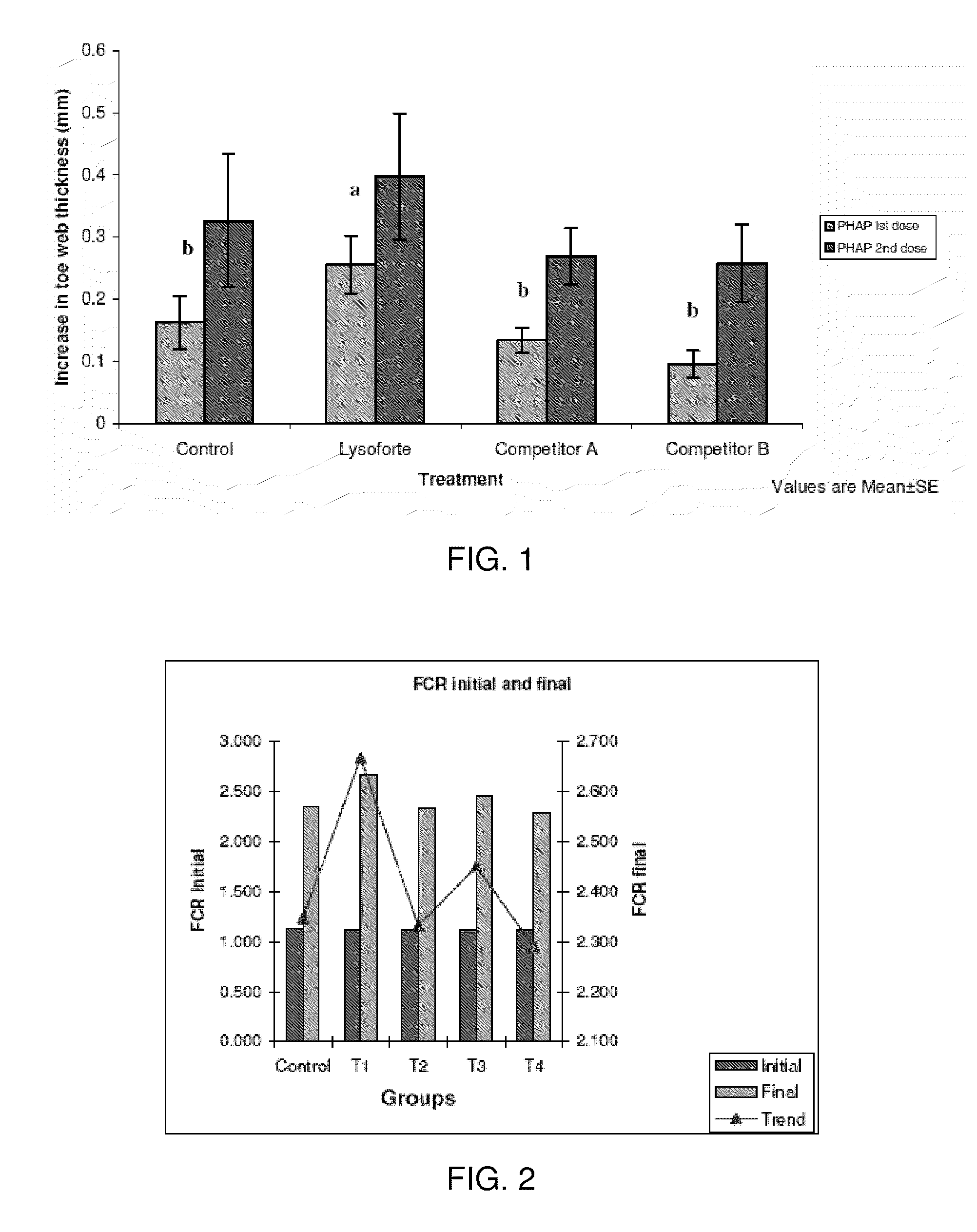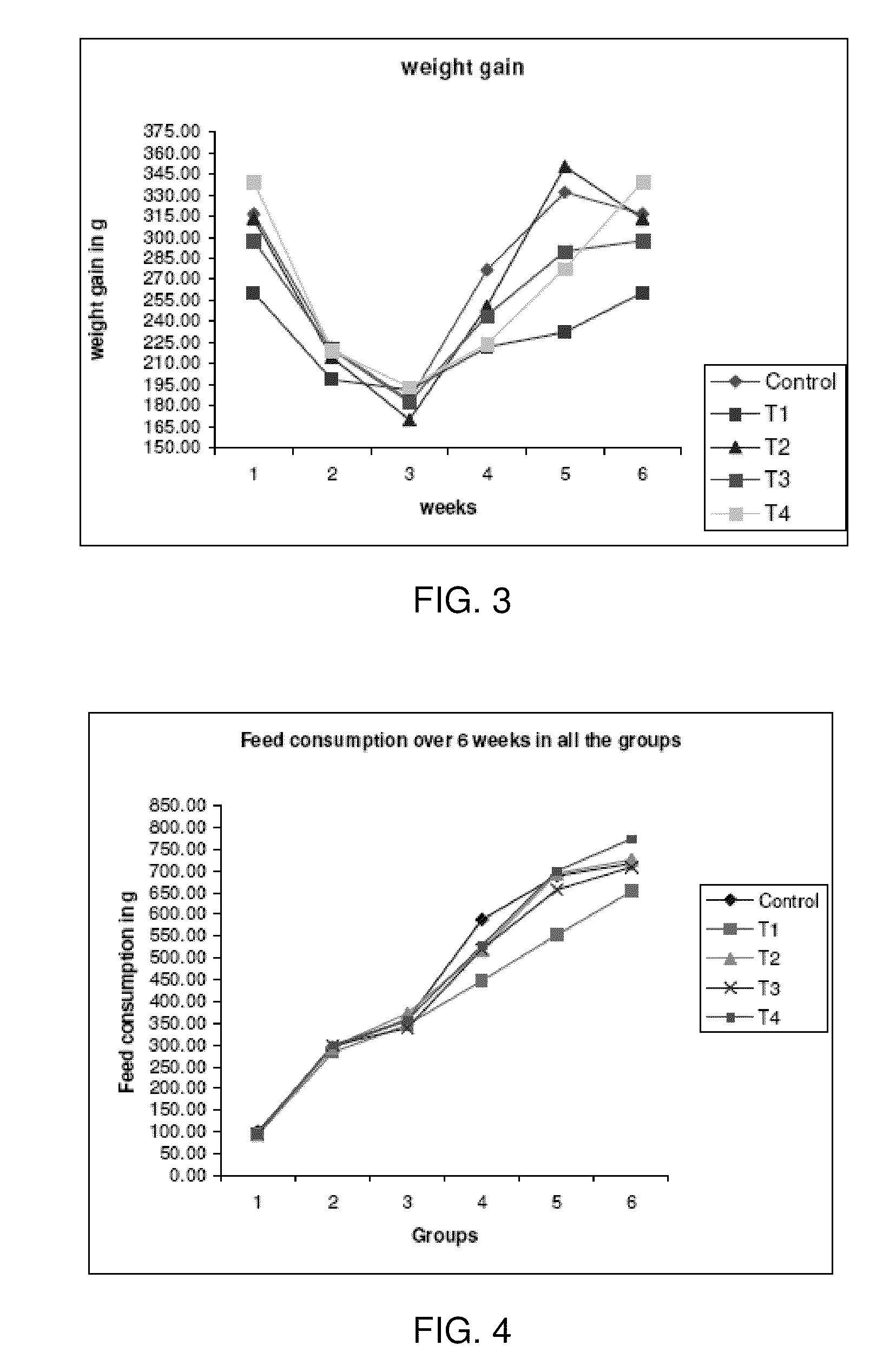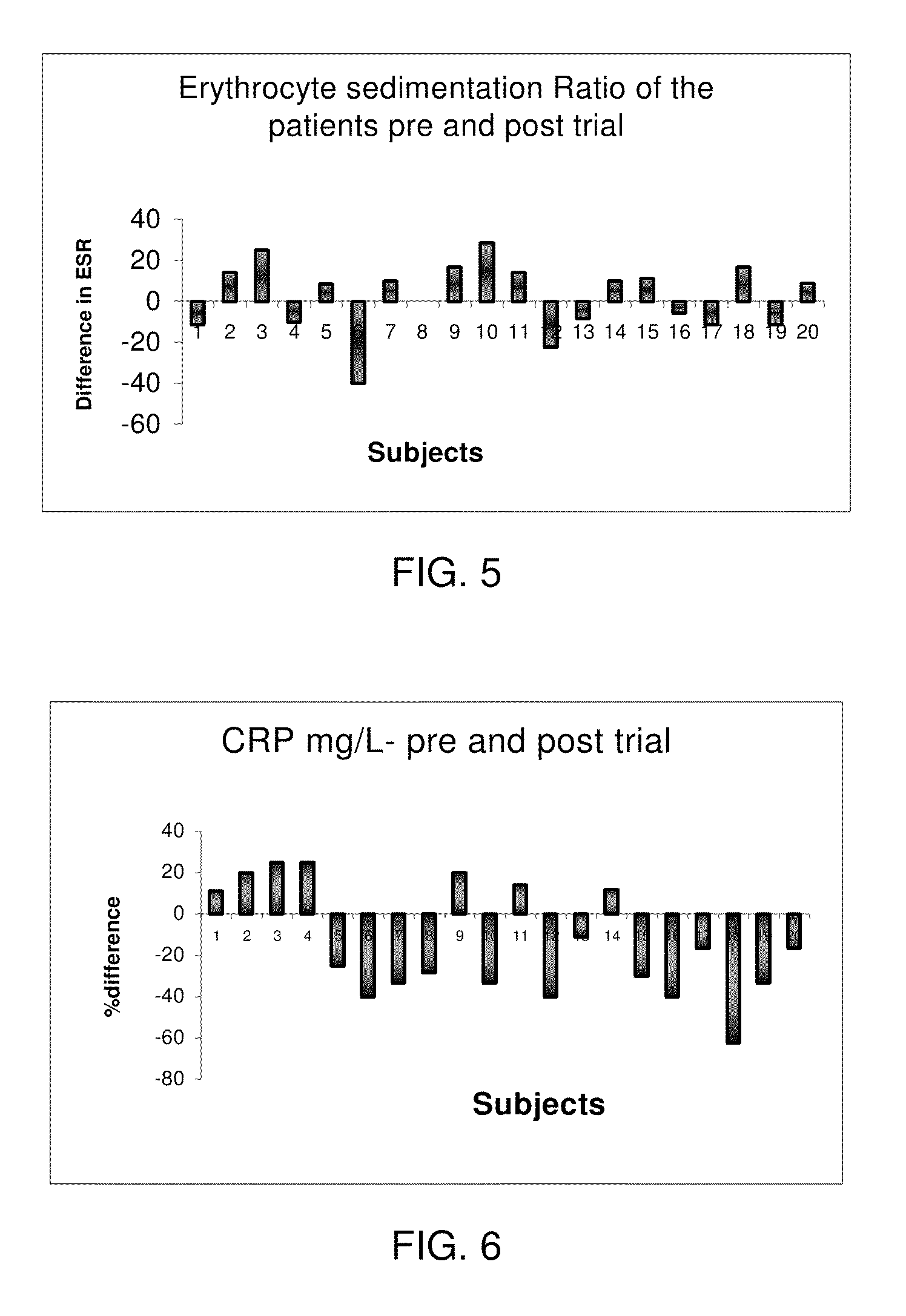Use of Lysophospholipids to Treat Inflammation
a technology of lysophospholipids and phospholipids, which is applied in the direction of phosphorous compound active ingredients, immunological disorders, drug compositions, etc., can solve the problems of limiting their use, affecting cell function and hence the well, and affecting the life expectancy of a vast number of humans, so as to improve the effect of tnbs-induced colitis, improve the effect of feed conversion rate and weight gain, and improve the symptoms of arthritis
- Summary
- Abstract
- Description
- Claims
- Application Information
AI Technical Summary
Benefits of technology
Problems solved by technology
Method used
Image
Examples
example 1
Effect of Lysophospholipids on Inflammation in Broilers
[0062]The immunostimulating activity of LPC (in the form of Lysoforte™ brand lysophospholipids from Kemin Industries, Inc.) was evaluated by assessing the cell mediated and humoral immune responses in broilers fed with Lysoforte™ and the efficacy was compared with two other sources of lysophospholipids. Cutaneous delayed type hypersensitivity (DTH) response elicited in chickens by an intra dermal injection of phytohemagglutinin-P (PHA-P) was used to assess the in vivo cell mediated immune response. The results obtained indicated that Lysoforte™ fed group has significantly improved (p<0.05) inflammatory response to PHA-P injection compared to the control (untreated) and groups treated with competitor products. Birds fed with competitor products having lysophospholipids did not show any enhancement in the cell-mediated immune response. The humoral immune response in birds was measured from the antibody titers produced against shee...
example 2
Effect of Lysophospolipids in Immune Potentiation in Broilers
[0084]An experiment was conducted in broilers to evaluate the efficacy of lysophosphatidylcholine (LPC) as Lysoforte™ booster, lutein and chromium propionate, individually and in a combination, towards immune potentiation in poultry. The study was carried out in Cobb 400 broiler chickens and the specific antibody response to New Castle disease virus (NDV) and Infectious Bursal Disease Virus (IBD) was quantified. The relative weights of the immune organs were measured twice during the study period of 45 days and the growth parameters like feed intake, weight gain and FCR were recorded. From the antibody titer values and immune organ weights obtained, it was observed that the LPC treated group showed a tendency towards enhanced immune response. It was also found that the combination group showed a lower immune response in terms of the antibody titers and the immune organ weights. There was a significant reduction in the weig...
example 3
Effect of Lysophospholipids, More Particular Lysophosphatidylcholine (LPC) on Inflammatory Bowel Disease
[0117]The prokaryotic and eukaryotic cells of the colon exist in a highly complex, but harmonious relationship. Disturbances in this remarkable symbiosis result in the development of inflammatory bowel diseases (IBD).Although the etiology of IBD is not entirely understood, it is known that the chronic inflammation of Crohn's disease and ulcerative colitis are a result of overly aggressive immune response to the commensal intestinal flora in genetically susceptible hosts. Despite having a common basis in over responsiveness to mucosal antigens, the two diseases have considerably different pathophysiologies. Crohn's disease is associated with a Th1 T cell-mediated response induced by IL-12 and possibly IL-23, whereas ulcerative colitis is associated with an atypical Th2-mediated response characterized by NKT cell secretion of IL-13 in humans. However, animal models of colitis have y...
PUM
| Property | Measurement | Unit |
|---|---|---|
| Volume | aaaaa | aaaaa |
| Mass | aaaaa | aaaaa |
| Mass | aaaaa | aaaaa |
Abstract
Description
Claims
Application Information
 Login to View More
Login to View More - R&D
- Intellectual Property
- Life Sciences
- Materials
- Tech Scout
- Unparalleled Data Quality
- Higher Quality Content
- 60% Fewer Hallucinations
Browse by: Latest US Patents, China's latest patents, Technical Efficacy Thesaurus, Application Domain, Technology Topic, Popular Technical Reports.
© 2025 PatSnap. All rights reserved.Legal|Privacy policy|Modern Slavery Act Transparency Statement|Sitemap|About US| Contact US: help@patsnap.com



